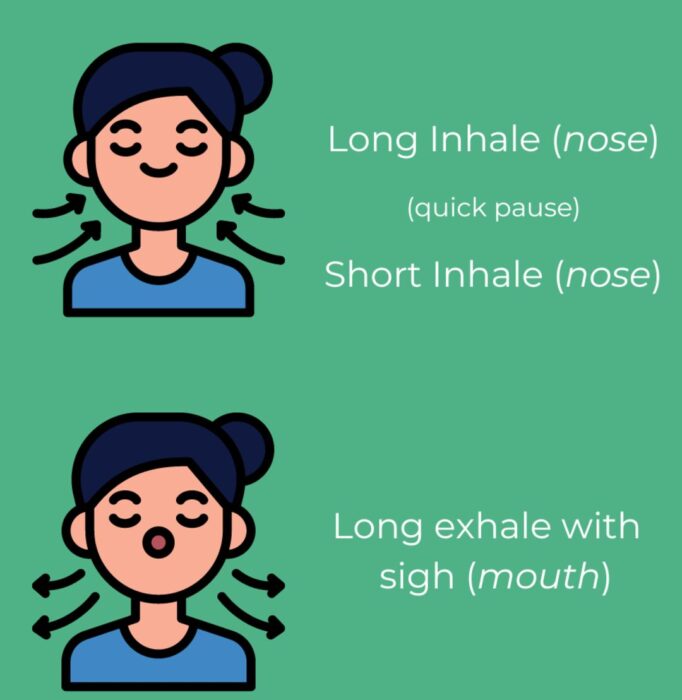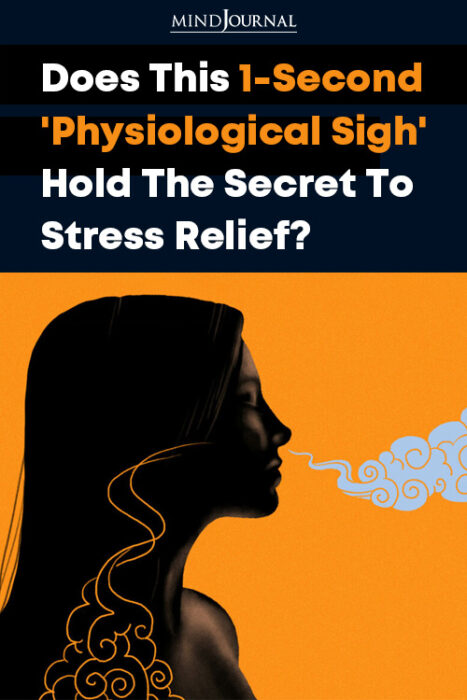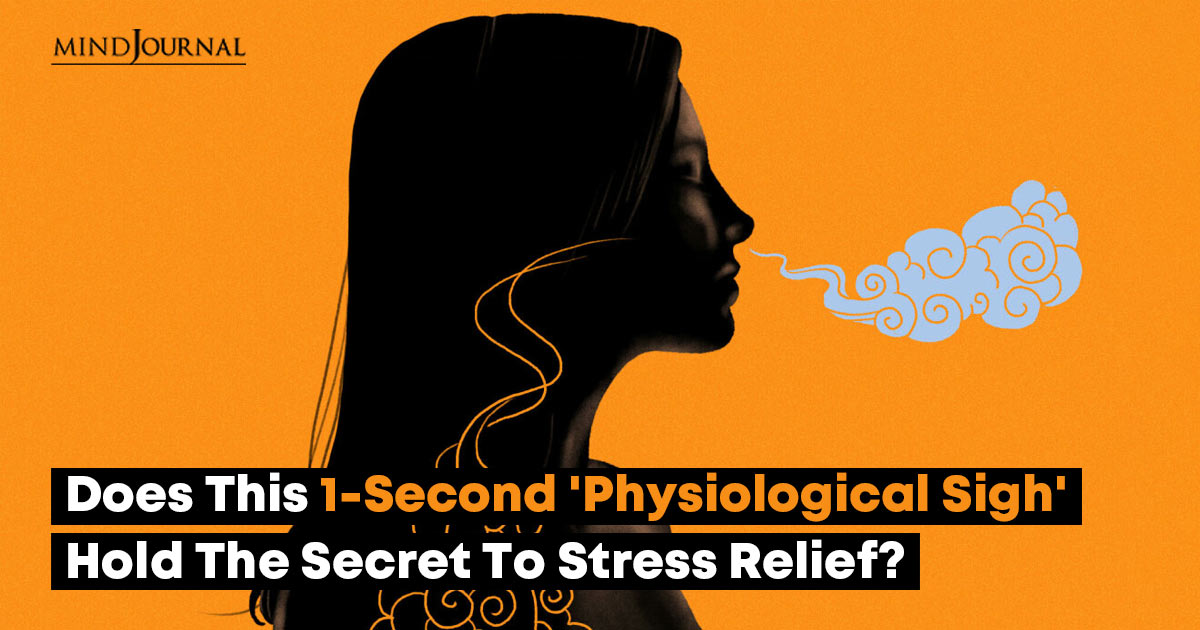In the relentless hustle and bustle of modern life, the “Physiological Sigh” technique has become an indispensable remedy for many.
Navigating the intricacies of relationships, workplaces, and even mundane chores like grocery shopping can leave us yearning for a respite from the constant tension that seems to cling to us.
We’re perpetually in pursuit of methods to alleviate stress, whether through dietary adjustments, physical activity, or experimenting with various relaxation techniques.
Read more here: Can Too Much Stress Actually Make You Sick? The Startling Impact on Your Physical Well-being
What Is The Physiological Sigh And How Does It Help You To Calm Down?
The “physiological sigh,” is an innovative stress reduction technique that operates in just one second, also known as the 1-second calming technique holding the potential to revolutionize stress management.
A prominent neuroscientist Andrew Huberman has revealed this incredibly accessible method to attain a state of tranquility swiftly.
A recent TikTok video posted by a fan account dedicated to the scientist delved into the mechanics of this approach and highlighted its capacity to serve as an instantaneous remedy for stress.
Huberman introduces the physiological sigh as a hard-wired, ultra-quick method to dismantle the stress response, restoring equilibrium to the body in real time.
He explains that this sigh is a natural physiological response, but it can also be consciously triggered for immediate relief.
The technique involves a simple sequence: a double inhale followed by a deliberate, prolonged exhale.
Delving into the science behind this technique, Huberman sheds light on the intricacies of lung function.
He describes the lungs not as mere bags, but as intricate structures composed of millions of tiny sacs scattered throughout, collectively spanning an area equivalent to a tennis court.

Read more here: Stress Is Contagious: Understanding The Ripple Effect Of Stress
Stress often causes these sacs to collapse, affecting lung capacity and, consequently, the body’s stress response.
The efficacy of the double inhale-exhale technique stems from its ability to address the collapse of those minute lung sacs.
Huberman explained the process by noting that, in performing the double inhale-exhale, the reinflation of these small lung sacs occurs.
The ensuing extended exhale contributes significantly to the elimination of surplus carbon dioxide from both the body and the bloodstream.
Given the association between carbon dioxide accumulation and increased stress levels, its swift removal results in a distinct sensation of relaxation.
Enthusiastic comments under the TikTok video underscore the efficacy of this technique. One viewer hails it as a remedy for a dysregulated nervous system, labeling it a true game changer.
Another astute question is whether the instinctive occurrence of this technique during crying contributes to the subsequent calmness often experienced post-weeping.
A perceptive parent shares that she’s already imparting this technique, playfully dubbed “bunny-breaths,” to her children.
In a world brimming with stress-relief methodologies, Huberman’s revelation stands out for its simplicity and rapid effectiveness.
Amid the chaos, he advocates for a return to the body’s innate wisdom and the art of mindful breathing.
While certain days may appear insurmountable in their stress-laden challenges, the double inhale-exhale technique offers a brief oasis of reprieve.
Huberman’s insights highlight the significance of being attuned to our bodies and the power of controlled breathing in dissipating stress.
As the 1-second calming technique resonates throughout the discourse, it accentuates the immediacy of the physiological sigh’s impact.
This stress reduction technique weaves seamlessly into the narrative, underlining the technique’s essence and its ability to usher in tranquility within seconds.
Read more here: Unwind Your Overworked Mind: 8 Effective Strategies for Dealing with Stress and Burnout
Andrew Huberman’s revelation of the physiological sigh marks a significant stride in stress management.
With this one-second wonder, he offers a tangible way to regain composure amidst life’s whirlwinds.
As the world grapples with stress, this technique reminds us that sometimes, the simplest solutions can be the most profound.









Leave a Reply
You must be logged in to post a comment.